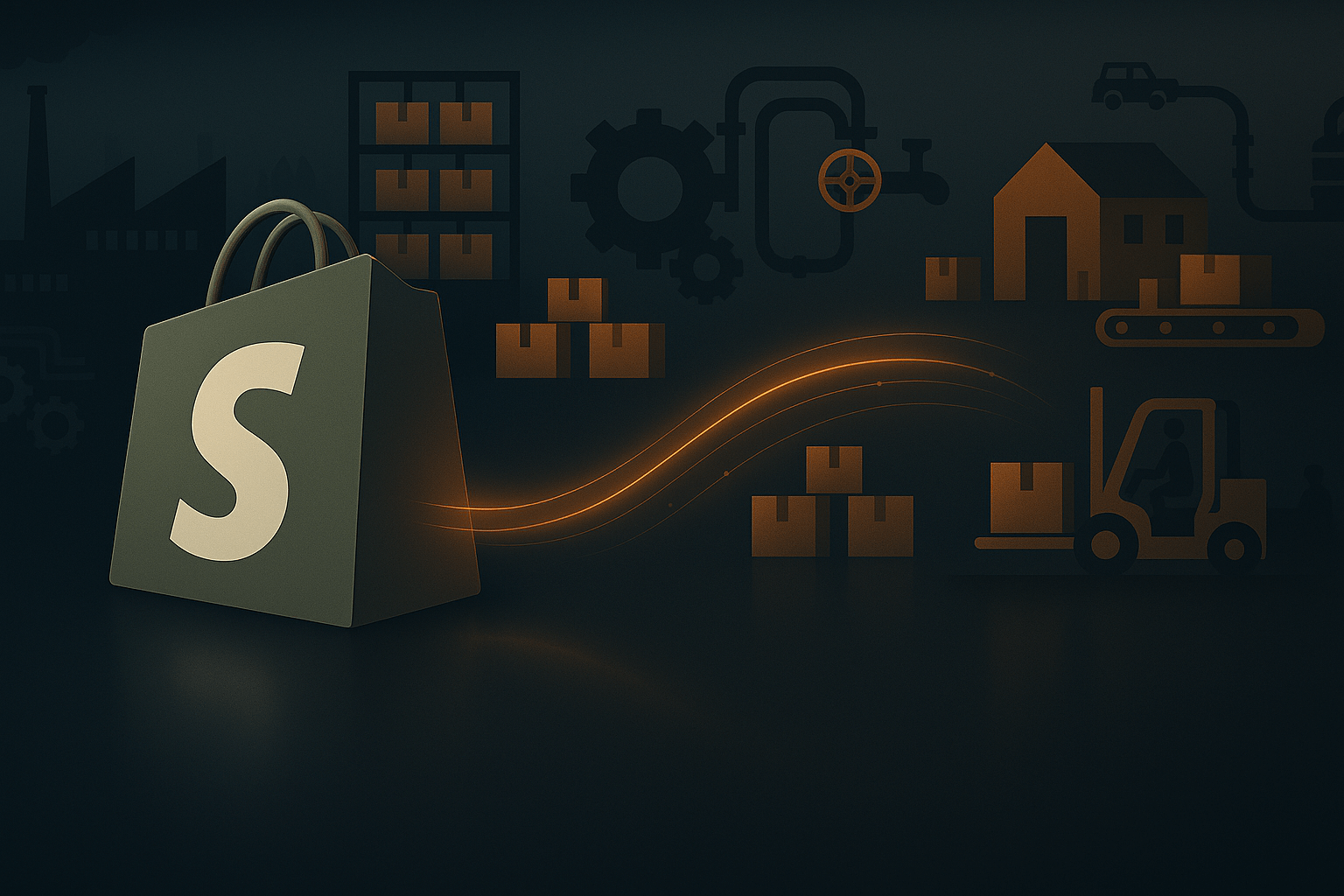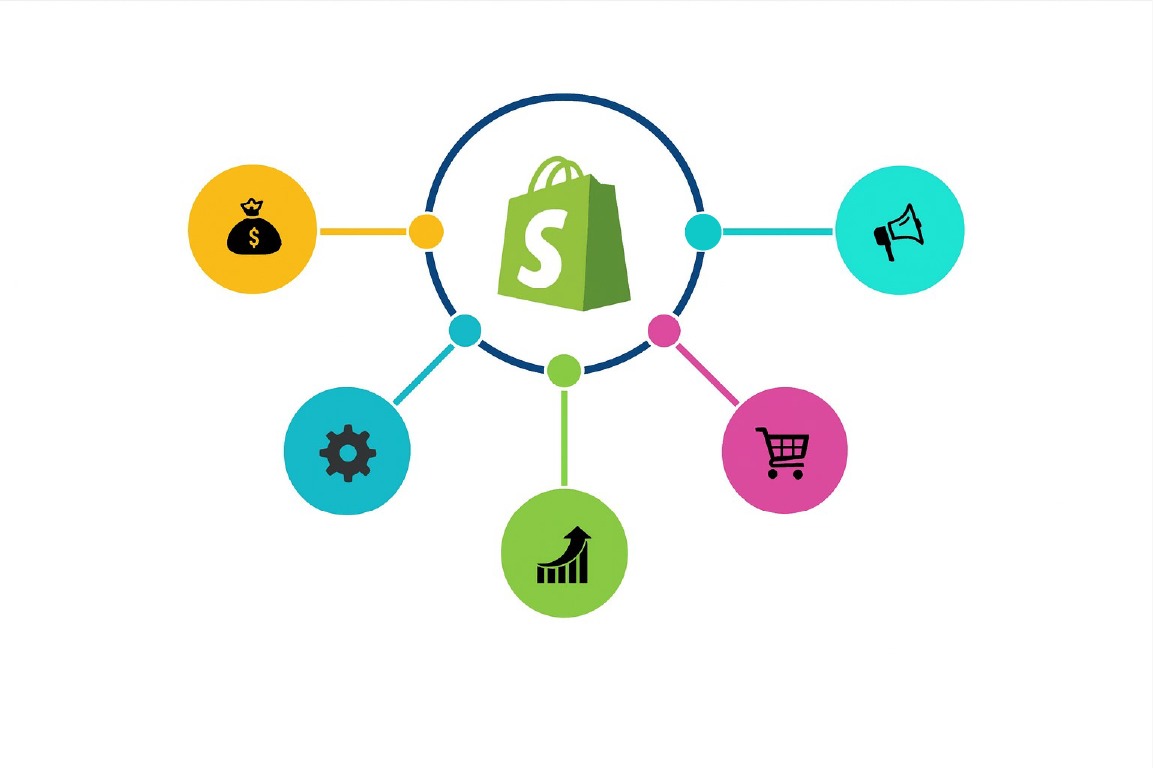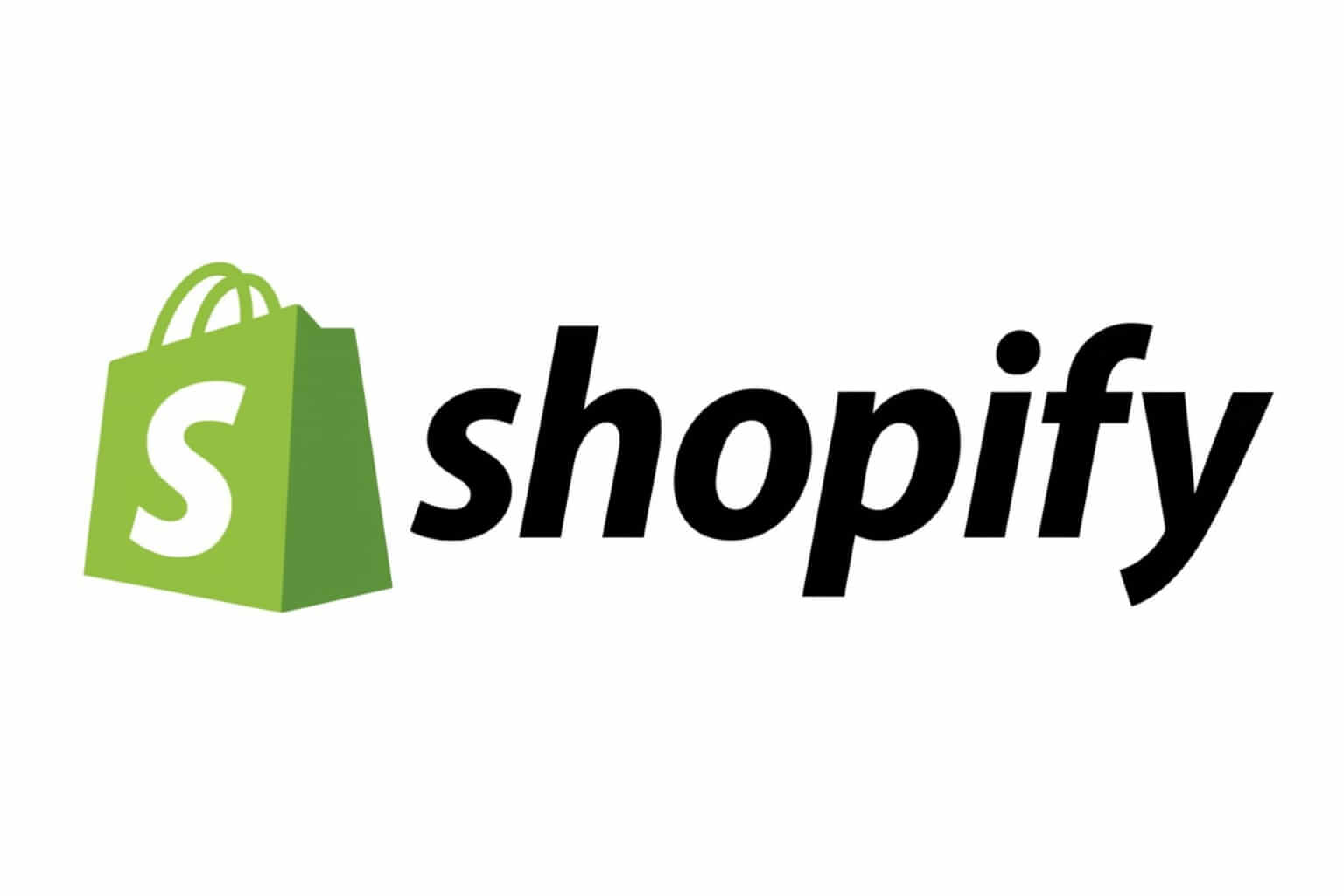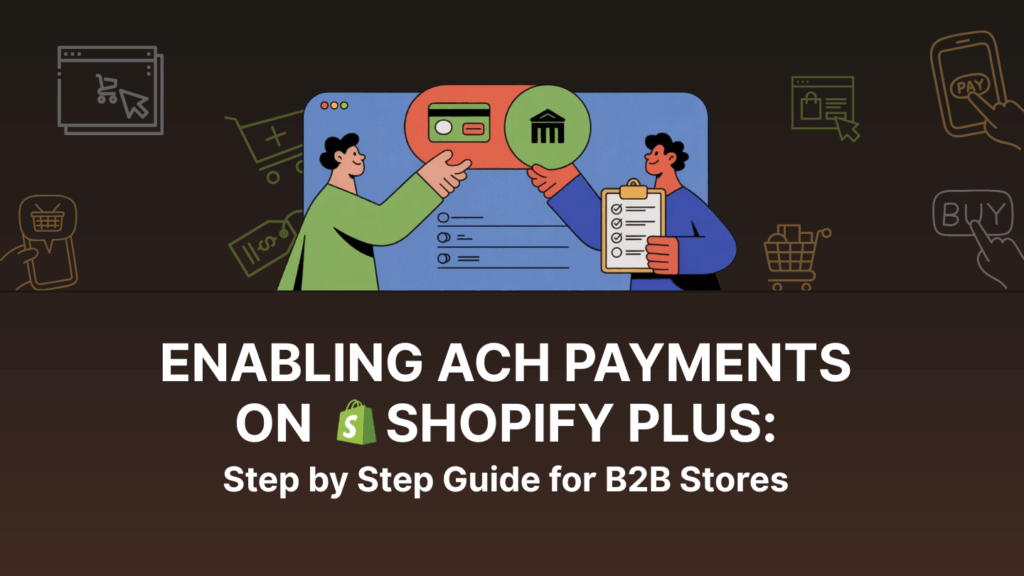When “Subscribe & Save” Doesn’t Cut It
Subscriptions work fine for coffee beans and razor blades. For DTC brands that sell products on predictable cycles, the model keeps everyone happy. That’s the world Shopify’s standard subscription apps were built for: predictable consumption, small-ticket items, and individual buyers.
Now picture a procurement officer at an industrial plant trying to reorder lubricants, filters, or cleaning chemicals. Their usage isn’t predictable; it depends on production runs, seasonal spikes, and even unexpected surges in demand from their own customers. Some months they burn through supplies twice as fast; other months barely at all. Forcing them into a rigid “ship every 30 days” model doesn’t make life easier. It creates friction.
That friction shows up as abandoned subscriptions, canceled accounts, and frustrated phone calls to sales reps who now have to “fix” what was supposed to be automated. What’s worse, it sends the wrong message to the customer: that you don’t understand how they actually work. In B2B, billing isn’t just a back-office function. It’s part of the relationship. When the numbers on the invoice don’t match the reality of consumption, trust erodes.
Industrial distributors running on Shopify are running headlong into this problem. The platform’s subscription apps were built for direct-to-consumer brands, not businesses that sell to factories, universities, or hospitals with complex contracts. Those buyers expect flexibility. They expect billing to adapt to them, not the other way around.
Where Standard Subscription Apps Fail Shopify Stores
Shopify has no shortage of subscription apps—Recharge, Skio, Bold, PayWhirl. They all promise to “make recurring revenue easy.” And for consumer brands, they deliver. A coffee roaster or vitamin company can lock in thousands of predictable, individual subscribers with very little friction.
But that same system collapses under the weight of B2B complexity.
The first limitation is cadence. Most apps assume a flat schedule: every 30, 60, or 90 days, send the product. There’s no logic for variable demand, no way to link replenishment to actual usage. For industrial buyers, that means either being overstocked with products they don’t need or scrambling to fill gaps when supply runs out early.
The second problem is data blindness. Standard apps don’t integrate customer data from ERP systems, IoT sensors, or usage logs. They’re built to ship by the calendar, not by reality. If a factory’s ERP says they’ve consumed 70% of their monthly lubricant supply, the subscription app has no idea. It just keeps sending shipments on its preset interval, whether they’re needed or not.
Then there’s pricing. Consumer subscriptions run on one-size-fits-all pricing. B2B doesn’t. Institutional buyers expect negotiated rates, tiered discounts, and contract-specific terms. Standard Shopify apps have little or no support for this. To the app, a customer is just another “subscriber.” To procurement, they’re an account with legally binding agreements. The mismatch creates errors, and errors create disputes.
Finally, account management itself is a sticking point. These apps were designed for individuals, not organizations. They don’t allow for true customization—multi-user accounts with different roles or customer-specific catalogs where a client only sees the SKUs tied to their contract. They assume a simple “add to cart, set schedule, ship.” That’s consumer logic. B2B requires account logic.
The result is predictable: abandoned subscriptions, frustrated procurement officers, and sales reps who spend their time cleaning up messes instead of building relationships. For industrial supply companies on Shopify, this isn’t a minor inconvenience. It’s a systemic failure.
The Cost of Forcing B2B Buyers Into a Rigid Commerce Platform Model
When you push a consumer-style subscription on an institutional buyer, you’re not offering convenience—you’re creating friction. Procurement officers don’t want to explain to their teams why pallets of product showed up early or why they ran out of stock because the subscription interval didn’t keep up with usage. To them, those mistakes are failures.
The financial cost comes first. Subscriptions that don’t match usage lead to waste. Extra stock clogs up multiple warehouses, burns cash flow, and makes procurement look careless. On the flip side, under-supply halts production, delays projects, or forces emergency orders at higher costs. Either way, the buyer loses, and they remember who put them in that position.
Then there’s the operational strain. Every time a shipment is wrong, sales reps have to step in, adjust orders, credit accounts, or expedite new deliveries. What was supposed to be automation becomes more work. Instead of scaling, the subscription model bogs your team down in manual fixes.
The deeper cost, though, is trust. Procurement departments negotiate contracts for predictability. They expect suppliers to honor those agreements without forcing them to adapt to a system designed for consumer shoppers. When your billing feels rigid or out of sync with reality, it signals that you don’t understand their business. In B2B, that perception is dangerous. Buyers don’t just cancel a subscription—they reconsider the relationship entirely.
There’s also the brand issue. When an industrial supplier looks like it’s running on consumer rails, it undermines credibility. A procurement officer ordering $500,000 worth of consumables doesn’t want to feel like they’re buying a monthly snack box. They want a partner who can flex with their workflows and adapt to their consumption patterns. Anything less looks amateur.
The cost of forcing buyers into the wrong model isn’t measured in churned subscriptions. It’s measured in lost contracts, strained relationships, and the silent shift of business to competitors who can offer flexibility.
The Blueprint for Usage-Based Billing with Shopify Payments
Billing That Follows Consumption
The core problem with consumer-style subscriptions is they don’t care what’s actually happening on the ground. They just keep filing orders on a calendar. But factories and hospitals don’t run on neat calendars. They run on production cycles, seasonal spikes, and unpredictable surges. A real system has to recognize that. If usage doubles, orders need to double. If demand slows, billing should slow too. The subscription shouldn’t dictate reality—reality should dictate the subscription.
Protecting Contract Integrity
Contracts aren’t just numbers buried in a system—they’re promises. Procurement teams negotiate them carefully, and they expect those terms to show up every single time they place an order. If a subscription ignores a discount tier or minimum quantity, the trust cracks immediately. A proper billing setup has to treat those contracts as sacred. No guessing, no “close enough.” The pricing and terms have to be exact, or you risk the relationship.
Supporting Buyer Workflows
B2B buying isn’t one person clicking “subscribe and save.” It’s teams. One person builds the cart, another approves it, and someone else handles payment. Standard subscription apps can’t make sense of that—they’re designed for individuals. But if you want procurement officers to trust automation, you need to build a system that bends to their process, not forces them to change it. Multi-user roles, approval flows, saved lists—those aren’t nice extras. They’re how the job gets done.
Integrating with the Operational Stack
Most distributors already track usage somewhere—ERP systems, IoT data, even manual logs. The problem is those signals never make it into Shopify. A real usage-based billing system connects the dots. It doesn’t have to be the brain; it just has to listen. When ERP data says inventory is low, Shopify should be ready to trigger replenishment. That way, the buyer never has to think about it, and your team isn’t left putting out fires.
How Flexible Billing Transforms B2B Relationships
When billing bends to reality, something interesting happens: it stops being a back-office chore and starts becoming a trust signal. Buyers notice when you’re not forcing them into a rigid “every 30 days” cycle. They notice when invoices line up with what they actually used. And in B2B, that kind of detail is what separates a vendor from a partner.
Procurement teams suddenly spend less time firefighting. They’re not calling your sales rep to cancel an early shipment or expedite an emergency one. They’re not wasting hours reconciling invoices that don’t match contracts. Instead, the system just works. Shipments arrive when they’re supposed to. The pricing is right. The templates they rely on are intact. For them, it’s one less headache in a world full of them.
For your team, the shift is just as powerful. Account managers stop acting like order clerks, fixing mistakes that never should have happened. They get back the time to actually talk strategy with customers, expand contracts, and introduce new product lines. Sales becomes proactive again instead of reactive.
And then there’s the relationship factor. Every correct invoice, every seamless reorder, and every bulk shipment that arrives on time reinforces the idea that you understand the buyer’s business. It might feel invisible in the moment—procurement officers rarely thank you for “getting it right.” But over time, that consistency becomes the reason they stay. It becomes the reason they recommend you over a competitor who’s still trying to cram them into consumer-style subscriptions.
Flexible billing doesn’t just reduce friction. It deepens the relationship. It tells your customers, “We get how you operate, and we’re willing to build around you.” That kind of message is hard to beat, and it’s even harder for a competitor to replicate once you’ve set the standard.
Technical Pathways: Making Online Store Subscriptions Work in Shopify
It’s one thing to say “billing should follow usage.” It’s another to actually make that happen inside Shopify—a platform built first and foremost for DTC. The good news is, it can be done. The trick is connecting the systems that already know how much your customers are using with Shopify’s checkout and subscription flows.
For some companies, the usage data already lives in the ERP. Every order, every consumption report from a buyer’s team, every adjustment tied to production schedules—it’s all there. The gap is that Shopify’s standard apps never see it. A custom middleware layer can bridge the two:ERP pushes usage data, and Shopify translates that into replenishment orders. Suddenly, the subscription isn’t a blind clock—it’s responding to actual demand.
A lot of teams are starting to tap into IoT. Picture a tank with sensors that keep an eye on fluid levels, or a small device that tracks when a filter is wearing out. Instead of someone checking manually, that data can push straight into Shopify through an API and trigger a reorder automatically. On the buyer’s side, it feels effortless; supplies just show up before they even think about running low. On your side, it builds loyalty without making procurement babysit the stock.
Then there are companies that rely on customer-reported usage. A portal where a buyer logs in once a week to confirm consumption numbers can feed the same system. It’s not as seamless as IoT, but it still turns replenishment into a usage-driven process rather than a guess.
The common thread is this: Shopify doesn’t have to be the brain. It just needs to be the execution layer—the storefront, the billing engine, and the system that captures revenue. The intelligence can live in your ERP, in IoT devices, or in custom reporting tools. As long as they’re tied together through APIs or middleware, Shopify can power a usage-based subscription model just as effectively as any consumer-facing cycle.
What matters most is trust. When buyers log in, they don’t see the machinery behind it. They just see invoices that line up with their contracts and shipments that match their needs. To them, it looks like you’ve built a system just for them. And in a way, you have.
Measuring ROI of Usage-Based Billing
Retention That Sticks
The easiest way to see the impact is to watch what doesn’t happen. Buyers don’t cancel. They don’t abandon subscriptions after a few frustrating months of getting shipments too early or too late. Instead, they stick around because the system finally feels like it was built for them. That stability becomes its own form of ROI. Recurring revenue stops feeling fragile.
Revenue That Flows Steadily
When replenishment matches usage, orders don’t lurch up and down. A B2B buyer isn’t skipping months to avoid overstocking, and they’re not calling in emergencies when they run out too soon. Orders happen when they’re supposed to, often more often than before. It’s not flashy growth—it’s steadier, healthier, and easier to forecast.
Disputes That Disappear
Ask any account manager what kills margins fastest, and they’ll tell you: credits, adjustments, and emergency rush orders. Standard subscriptions create those headaches by ignoring contract terms. Usage-based billing takes that off the table. Invoices match expectations, and shipments arrive when needed. Instead of arguments, you get silence—and in B2B, silence from procurement usually means everything is working.
Time That Sales Reps Get Back
Behind every subscription mistake is a sales rep pulled into cleanup duty. Fixing invoices, apologizing to procurement, rushing replacements. None of that grows the account. It just drains energy. A system that adapts to usage frees reps from firefighting. They can get back to expanding contracts, introducing new products, and building relationships—the work that actually moves numbers.
Trust That Locks In Loyalty
The deepest ROI isn’t a number on a dashboard. It’s the feeling procurement officers get when they realize they don’t have to babysit your system. They trust it. And once they trust it, they’re not going anywhere. Switching suppliers means risking the smooth process they’ve grown used to, and few procurement teams gamble with stability. That’s where the long-term value sits: customers who renew, expand, and recommend you to others—because you made their lives easier.
Competitive Advantage: Turning Billing Into a Differentiator
Most distributors treat billing like plumbing—important, but invisible. As long as invoices get sent and payments come in, it’s good enough. But in B2B consumables, billing touches the one thing procurement cares about more than price: predictability. If you can give them a system that adapts to their actual usage, you’re not just solving a back-office problem. You’re giving them a reason to stay with you instead of shopping the competition.
That’s the edge most companies miss. Everyone can sell filters, lubricants, or gloves. What buyers remember is whether you made their job easier or harder. If your system delivers products before they even realize they’re running low, you become the supplier who “gets it.” If your invoices always line up with contracts, you become the supplier they don’t have to babysit. Over time, that’s worth more than a discount.
Most of your competitors on Shopify are still running cookie-cutter subscription apps. They’re forcing procurement teams into rigid cycles, dealing with canceled orders, and putting out fires with frustrated buyers. If you’re the one supplier who breaks that pattern, who builds billing around the customer instead of the other way around, you stand out fast.
The advantage isn’t just retention. It’s acquisition too. Procurement officers talk. Word spreads that you’re easier to work with, that your system “just works.” In an industry where contracts are sticky and relationships travel by reputation, that’s as good as a moat. Once you’ve set the standard for flexibility, competitors have to work twice as hard just to catch up, and buyers rarely give them the chance.
Billing may never be glamorous, but in B2B consumables it’s one of the clearest ways to prove you’re serious about being a partner, not just another vendor. Get it right, and it stops being plumbing—it becomes positioning.
Building Usage-Based Subscriptions on Shopify
Audit Current Subscription Workflows
Before fixing subscriptions, you need to know how they’re breaking. Most problems hide in rigid cadences, missing contract logic, or manual cleanup by sales.
Checklist – Subscription Pain Audit
☐ Identify accounts with canceled subscriptions (reason: cadence mismatch, invoice disputes, over/under-supply).
☐ Review how often sales reps fix subscription orders manually.
☐ List which contract terms (discounts, minimums, tiering) are not reflected in invoices.
☐ Map buyer workflows: who builds carts, who approves, and who pays.
Contract Integrity Map
Procurement officers don’t forgive mistakes in pricing. Contracts must move directly into the subscription logic without shortcuts.
Pricing & Contract Translation
| Contract Element | How It Works Today | Where We’re Headed |
| Tiered discounts | Everything is stuck at a flat price, no way to reward bigger buyers | We can map discounts into BigCommerce/Shopify Plus price lists, or use middleware to manage tiers cleanly |
| Volume breaks | Right now they’re ignored, so bulk orders don’t get special pricing | With some API logic, we can automatically trigger the right break once certain volumes are hit |
| Account-specific terms | Sales has to step in and manually adjust whenever a customer has special terms | Those terms can live in the ERP and flow straight into checkout, so the right price just shows up |
| Approval workflows | There’s no approval process at all today | By setting up role-based accounts through middleware, we can add proper sign-offs before orders go through |
Usage-Driven Triggers
Stop billing on a calendar. Billing should follow actual consumption signals.
Options Matrix
Sources & Examples — How Replenishment Can Be Triggered
| Source | Example Use Case | How It Connects |
| ERP logs | Lubricant consumption reports | ERP → middleware → triggers Shopify subscription |
| IoT sensors | Tank levels, filter wear | API call fires off an automatic replenishment order |
| Buyer self-report | Weekly portal updates | Simple form entry → adjusts delivery schedule |
Trigger Setup Checklist
☐ Pick your data source (ERP, IoT, or buyer input)
☐ Set clear thresholds (e.g. reorder when 30% remains)
☐ Map out the flow: trigger → subscription update → invoice
☐ Pilot with 3–5 accounts before scaling
Buyer Workflow Alignment
Subscriptions must bend to procurement processes—multi-user roles, approvals, and saved templates.
Table – Buyer Workflow Must-Haves
| Workflow Need | Consumer Apps Do | B2B Subscription Should Do |
| Multi-user roles | Single account only | Multiple users per account, role-based permissions |
| Approvals | Not supported | Approval flows tied to contract terms |
| Saved lists/templates | Basic reorder list | Preserve historical templates; bulk re-orders |
| Catalog visibility | Full catalog shown | Contract-specific catalog filtering |
Future-Proofing B2B Subscriptions on Shopify
The subscription model Shopify was never designed for factories, hospitals, or construction crews. It was designed for coffee beans and razors—predictable cycles, predictable buyers. Industrial supply doesn’t work that way. Usage spikes, contracts govern every price, and procurement teams have zero patience for systems that make their jobs harder.
That’s why sticking with a standard subscription app is so dangerous. It’s not just clunky—it actively risks contracts, revenue, and trust. Every wrong invoice, every mistimed shipment, and every ignored contract term chips away at relationships you spent years building.
A usage-based billing system flips that. It respects consumption patterns, protects negotiated pricing, and adapts to the workflows buyers already live with. Done right, it makes your business look less like a DTC store duct-taped to Shopify and more like a true B2B partner who understands how procurement actually operates.
The distributors who make this shift early will have the edge. They’ll keep accounts competitors are losing. They’ll win new business on the strength of being the supplier who finally solved the subscription problem. And once procurement teams are comfortable, they won’t move—they’ll double down.
If you’re selling consumables on Shopify, the question isn’t whether you need usage-based billing. It’s how much longer you can afford to run without it. That’s why the first step isn’t installing another app. It’s mapping where your subscriptions are already failing your buyers.
Contact us. We’ll trace your subscription workflows, flag where they’re putting contracts at risk, and show you how to rebuild them so billing flexes with your customers—not against them. Because in B2B, the supplier who gets billing right is the supplier who keeps the account.











